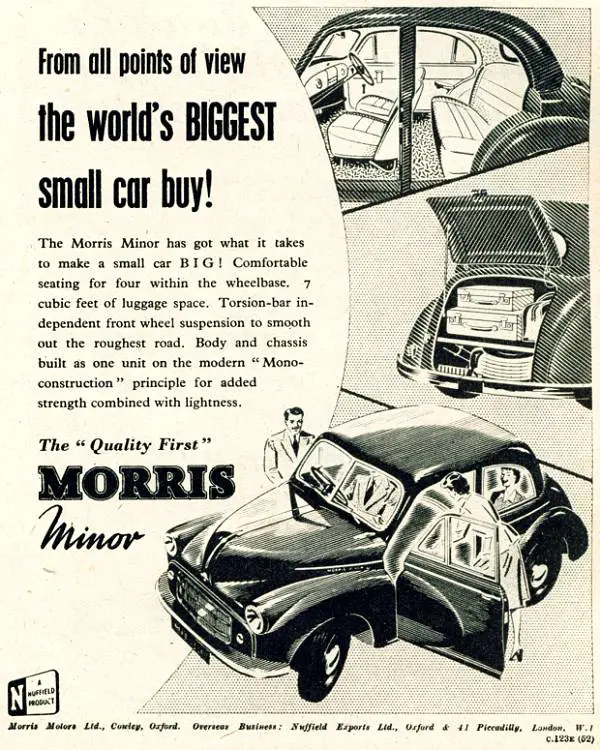IT WAS A DIFFERENT WORLD – TWENTY FACTS ABOUT LIFE IN 1952
13 May 2022
- There were circa 2.5 million cars on the road in 1952.
- Only one in twenty Britons had access to a car.
- Some British car marques of 1952 that are no longer with us: Armstrong Siddeley, Austin, Hillman, Humber, Jowett, Morris, Singer, Standard, Sunbeam-Talbot, Triumph, Riley and Wolseley.
- The average annual wage for men was £495 and £318 for women.
- Few British cars were capable of 100 mph, while commercial vehicles were restricted to 30 mph.
- Petrol had been “off the ration” since 1952, but food rationing would continue until 1954.
- London motorists would have to contend with trolleybuses (in service until 1962) and trams (the network would not cease operating until 6th July 1952).
- Milk cost 6 1/2d per pint, beer was 1/9d per pint, and half a pound of butter was 1/6d.
- If you were feeling particularly extravagant, a television set would have cost you £72 10s – or nearly two months’ wages. There was only one channel as ITV would not commence broadcasting until 1955.

- The BBC TV schedule for Thursday 5th June 1952 included coverage of Trooping the Colour and For Women: About The Home – “Practical help for the housewife, presented by Joan Gilbert”.
- Some used car bargains as advertised in local newspapers on 5th June 1952 – 1930 Austin Seven: £35. 1949 Standard Vanguard with a radio and a heater: £920. 1946 Jaguar 1 ½ Litre saloon: £795.
- Britain’s best-selling new car was the Morris Minor.
- A Ford Zephyr-Six would have cost you £829 1s 1d.
- The bulk of car manufacture was reserved for export, and some motorists endured waiting lists of five or even six years.
- New car buyers also had to sign a covenant stating they would not sell their vehicle within a fixed period.
- Not all models had two wipers as standard, while Fords were equipped with a vacuum-powered set-up; the blades slowed when pressing the throttle.
- Terms that would not have been in a 1952 motorist’s vocabulary – “Motorway”, “Little Chef” and “Double Yellow Lines” (1958), “Traffic Wardens” and “MOT Test” (1960), “Automatic Level Crossing” (1961), “Breathalyser” (1967) and “Pelican Crossing” (1969).
- Flashing indicators were illegal on British roads, and signalling was either by hand or via semaphore trafficators prone to either sticking or falling off.
- “Seat belts” were for aeroplanes.
- And seventy years ago, it was more than probable that you would encounter a driver who had never taken a test. The compulsory examination only became mandatory on 1st June 1935 – and there were no tests between 2nd September 1939 and 1st November 1946.
